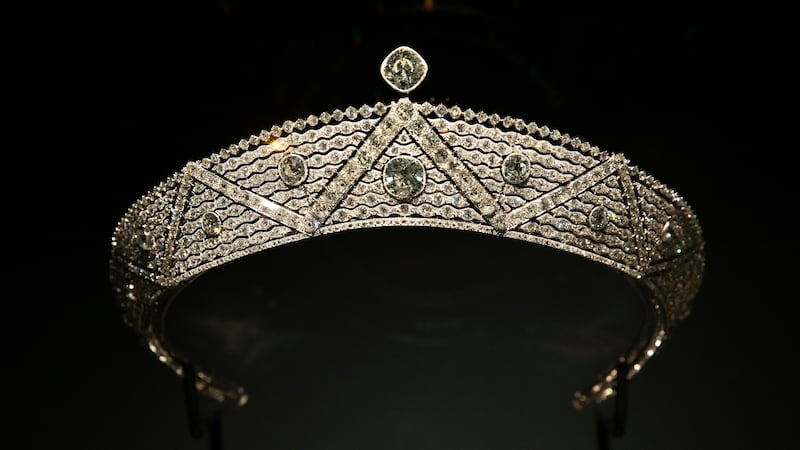The undeniable influence of Islamic design on Cartier's jewellery is currently on show at Louvre Abu Dhabi. Until March 24, the museum is hosting Cartier, Islamic Inspiration and Modern Designs, an exhibition that explores the ways that different facets of Islamic design have inspired the famed French maison.
Having fashioned pieces from noble materials such as gold, diamond, ruby, sapphire and emerald, the house holds a unique place within the rarefied universe of high jewellery. Yet, as the expansive exhibition currently on show at Louvre Abu Dhabi reveals, many of the design elements that underpin this remarkable body of work are not of French origin, but rather, Islamic.
The exhibition examines the intersection between the house’s keen instinct for exquisite creations and the elegant precision of Islamic art. As the acting director of scientific, curatorial and collection management at Louvre Abu Dhabi, Guilhem Andre leads the way around the exhibition and outlines how Islamic work helped shape the work of many European designers in the 20th century, even partly influencing the Art Deco movement.
Inside Louvre Abu Dhabi exhibition exploring Cartier's ties to Islamic world
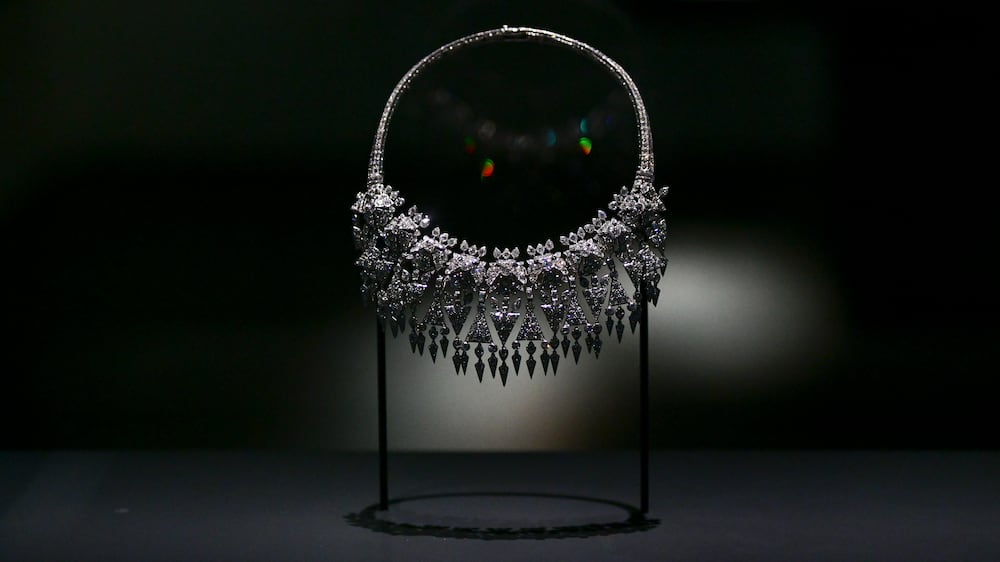
“The first room explains the atmosphere in Paris at the turn of the last century, when Islamic art, and the studies of it, started arriving into the western world,” he tells The National during a private tour.
Arriving in Europe in the early 20th century, Islamic artworks were displayed publicly for the first time to an enraptured audience. Before this, works of art from overseas broadly vanished into royal collections.
Refined and highly sophisticated, the reputation of the Islamic works swept through Europe, prompting a fascination that persists today. The French capital, Andre explains, “was key in the development of the learning of Islamic art at this moment”.
Across several rooms, the show lays out examples of both genres side by side, laying bare a mirroring that is, at times, startling. Today, such literal borrowing would fall foul of cultural appropriation, yet Andre says the exhibition offers a broader view – that the arrival of Islamic artworks had such a profound impact, it sparked a new way of thinking.
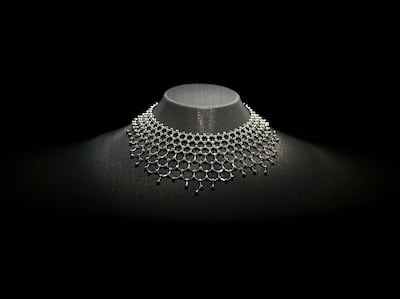
Andre says: “It’s a celebration of Islamic art. That is very clear and obvious throughout this exhibition. We are here to pay tribute to the artists of the Islamic world through comparison with 20th-century pieces by Cartier.”
First staged in Paris in 2021 at the Musee des Arts Decoratifs, the show then travelled to Dallas, Texas, in 2022 before making the journey to the UAE.
However, new research was then carried out, bringing to light a far more nuanced intertwining. “Further research was done on the documentation of Cartier, and this is the beauty of working with Cartier as it has an amazing archive and documentation of everything that was produced. Everything is preserved,” Andre says.
“In-depth research was conducted on all the different designs, how they were produced, and then on the objects that had been influencing the production of Cartier at that time. This is five years of work for this exhibition [and it has] been completely reshaped for Abu Dhabi. It is now essentially a brand-new exhibition.”
With its brevity of line, the discreet rhythm of its geometric repetition and very different use of colour, the Islamic design proved pivotal to Cartier. The house understood that the tight discipline of the art form made it ideal for translation into another medium, one centred around restraint and precision: jewellery.
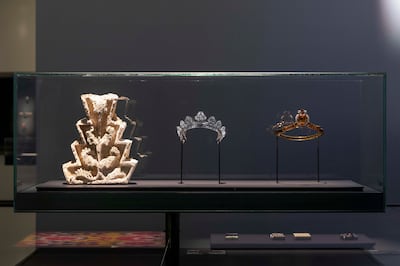
One such example is the Cartier Oriental bandeau headband, dated 1911. Fashioned with white diamonds, it has a large zigzag motif that runs horizontally, interspersed with wavy lines of smaller stones.
This patterning, it transpires, was lifted from the borders Louis Cartier, son of company founder Alfred Cartier, had seen on Persian carpets. Drawings displayed alongside the headband show his attempts at reworking the classical motifs into a more western-style piece. It’s a surprisingly intimate process.
A section of roof decoration (dated to the 14th to 15th centuries), meanwhile, from the Great Mosque in Cordoba, Spain, has a stepped, pyramid design, which is closely mirrored in a Cartier diamond and aquamarine tiara, displayed alongside.
A fragment of Persian mosaic, dated to the same period, is shown next to a 1930s Cartier cigarette case that carries the same blue and turquoise motif, now as a cascading diagonal design, edged in gold.
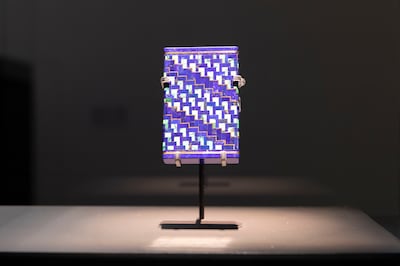
It soon becomes clear that far from being an abstraction, many of Cartier’s pieces were a literal translation, albeit in a new medium. “This is something we see throughout the exhibition,” says Andre. “And it was not only the architecture, but also the colours and the different patterns.
“According to the moment in the 20th century, different kinds of works were reinterpreted through the creation of jewellery. This story is also linked with different personalities that were leading Cartier during the 20th century.”
Many members of the Cartier family were enthralled by the region. Jacques Cartier, another of Alfred’s sons, came to the Gulf in 1912 in search of its famous pearls, and photographs of his travels through India and the Middle East can be seen in the exhibition.
Both Jacques and Henri Cartier (another descendant) were avid collectors of Islamic artworks, while a later key figure at the house, Jeanne Toussaint, director of high jewellery from 1933 to the 1970s, widened this sphere of influence to include pieces from India.
For Cartier, the restraint seen across Islamic works offered a rich vein of inspiration in keeping with its own vision. The classical design of a central motif, for example, set within an open ground, is often seen as the formal garden layout on carpets, prayer mats and covers of the Quran and translated into patterning across pen cases and cigarette boxes.
The proliferation of the use of blue during this period is another direct homage. One room in the exhibition is filled with projected images of mosques intricately decorated in blue tiles, providing a backdrop for a cabinet of Cartier treasures in the same dazzling tone.
“The materials were also influenced by Islamic art, reinterpreted through the semiprecious stones of lapis lazuli and turquoise, which is very close to what we see in the original architecture,” Andre says.
“This is interesting, not only the geometric patterns, but also the floral patterns, and marks an expansion of areas of Islamic art, in particular Iznik. The leaves, which are so typical, are reinterpreted into the jewellery pieces from Cartier.”
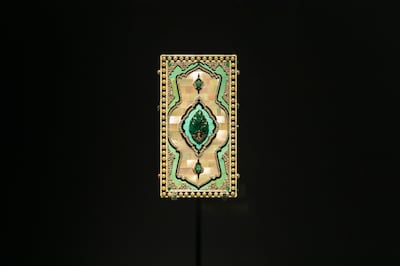
Turkish Iznik ceramics offered a different use of colour in floral and foliage designs, seen on a Cartier cigarette case dated 1927, decorated with flowers in coral, sapphire and moonstone on a black background.
The sheer scope of the exhibition required the Louvre Abu Dhabi team to call on several institutions and private collectors to amass the right treasures. Among those that loaned pieces are the Musee des Arts Decoratifs, the Qatari Al Thani collection and the Al Sabha collection from Kuwait.
Andre adds: “For this exhibition, we have more than 15 lenders, so it’s a way for us to host not only the magnificent collections from Cartier, but also connect with the institutions around the Middle East. This is significant.
“What is interesting, and this was unearthed in the new research, is that many of the artworks owned by Henri and Jacques Cartier have been brought back here for this exhibition. That’s why this show is so important.”
“Almost 10 per cent of the artworks on show are Islamic, and that was not the case in the previous version. There are almost 420 pieces and about 42 are Islamic art.”
Also included in the display is a fine example of calligraphy carved into a wooden panel. Decorated with hippopotamus ivory, it is believed to have been part of a door from the Mamluk Sultanate (1250-1517) in Egypt.
“This piece is particularly interesting as it’s owned by Louvre Abu Dhabi – it has several works from its own collection within the exhibition – and this piece was in a show of 1903, one of the very first exhibitions of Islamic art in the West, organised in Paris at the Louvre. So it has come full circle,” Andre explains.
The sheer, dazzling beauty of the jewellery, glassware, metalwork and ceramics on display gives an insight into a storied history of fine jewellery and its myriad inspirations. “We focus only on masterpieces. This is the DNA of the institution,” explains Andre.
“Abu Dhabi has in its scope to explore every civilisation across the world at the highest level. The idea of highlighting the legacy of Islamic art in the modern creation – or what it means to be modern – totally makes sense.”
Cartier, Islamic Inspiration and Modern Design is running at Louvre Abu Dhabi until March 24
